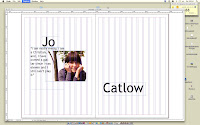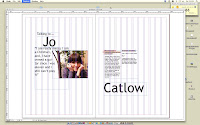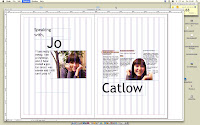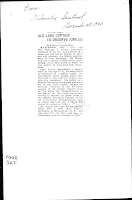I have liked how this module has taken steps from project to project, I have been able to experiment with a variation of production and process methods. From 'communication is a virus', I learnt that I definitely really like aspects of using video to communicate messages. I was able to develop my skills in Final Cut and work as a partnership with Sean Perkins, which was a lot of fun! I also like the work towards filming, story boards, inspiration, a lot of it can be done through imagination, which is how I like to work. I like to visualise work before I produce it.
Vogue was a nice little brief. It was something I had almost total freedom with, I liked being able to just produce a poster after given one word. It was such a simple, short brief yet also enjoyable just to have a little fun with producing a poster to be entered in a competition, with fingers crossed. I followed my gut when it came to this brief, I felt we had too little time to drift about, when I thought of Vogue, I thought of French. French colours, french text, handwritten almost like a sketch book along with a diary entry. The text is a short poem I wrote, about the pressure 'vogue' creates. I enjoyed this brief and would definitely like to do it again.
I also thought InDesign was a fresh project, the whole software was new to me and I enjoyed finding out about it, I feel it will be very useful for future projects. I liked how what we were being taught were double page spreads that you see every day in magazines and newspapers, and I feel after new knowledge about layouts etc.. I understand it all much more. I also liked this project because I like layout in design, I think it's important. Working towards an article was interesting as well, writing about someone and relating a piece of work to them seems automatically purposeful and exciting.
Speaking from experience was a project that I found fun to work with. The title itself already makes it something I can relate to myself, therefore audience and research is something I can really indulge with. I chose to promote my piece through posters and things quite visual, I feel that when I was a first year I was given so many things, that sometimes just a simple piece of visual graphic design can make a difference. The highlight of this project was actually the production method. Due to me being a bit unorganised in the fact that the digital print room was overflowing, my print slot was too late for my work to be ready for final presentation. I decided to screen print. Luckily, I really enjoyed doing it, and have basically learnt how to do it, I reckon I could go down to Vernon street and be alright with sorting it all out and stuff, cleaning screens etc... It also looks so much better then digital print, when dealing with block colours.
All in all a productive module I think, learnt, developed, enjoyed new processes and techniques. I feel I could've pushed myself a bit further though, maybe take things to the next step, challenge myself!
Start now.
I also thought InDesign was a fresh project, the whole software was new to me and I enjoyed finding out about it, I feel it will be very useful for future projects. I liked how what we were being taught were double page spreads that you see every day in magazines and newspapers, and I feel after new knowledge about layouts etc.. I understand it all much more. I also liked this project because I like layout in design, I think it's important. Working towards an article was interesting as well, writing about someone and relating a piece of work to them seems automatically purposeful and exciting.
Speaking from experience was a project that I found fun to work with. The title itself already makes it something I can relate to myself, therefore audience and research is something I can really indulge with. I chose to promote my piece through posters and things quite visual, I feel that when I was a first year I was given so many things, that sometimes just a simple piece of visual graphic design can make a difference. The highlight of this project was actually the production method. Due to me being a bit unorganised in the fact that the digital print room was overflowing, my print slot was too late for my work to be ready for final presentation. I decided to screen print. Luckily, I really enjoyed doing it, and have basically learnt how to do it, I reckon I could go down to Vernon street and be alright with sorting it all out and stuff, cleaning screens etc... It also looks so much better then digital print, when dealing with block colours.
All in all a productive module I think, learnt, developed, enjoyed new processes and techniques. I feel I could've pushed myself a bit further though, maybe take things to the next step, challenge myself!
Start now.
























































